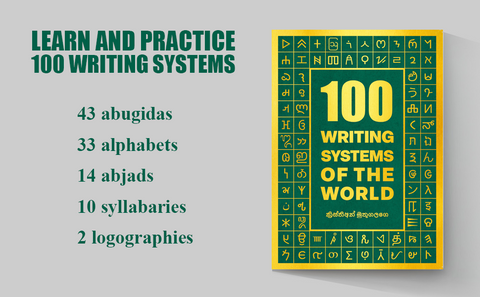Discovering the Enigmatic Lepcha Script: A Window into the Linguistic Heritage of the Lepcha People

Script type: The Lepcha script is an abugida, a type of writing system where consonants carry inherent vowel sounds, and additional diacritic marks modify the vowels. This unique feature imparts a melodious flow to the script, reflecting the musicality of the Lepcha language.
Writing direction: Traditionally, the Lepcha script is written vertically from left to right, with each line read from top to bottom. However, horizontal writing is also used in certain contexts.
Creator and invention time: The Lepcha script is believed to have been created by Thikúng Mensalóng in the 17th century, a revered Lepcha scholar and sage. The exact date of its invention remains shrouded in mystery, adding to the allure of the script's origin.
Time period of use: The Lepcha script has been in use for centuries, cherished by the Lepcha community as an embodiment of their cultural heritage. It has served as a vital means of communication, allowing the transmission of traditional knowledge, religious texts, folklore, and everyday discourse across generations.
Population and current usage: The Lepcha script is actively used by the Lepcha people, an indigenous community residing in the eastern Himalayan region of India, Nepal, Bhutan, and Tibet. While the Lepcha population is relatively small, the script retains its significance as a symbol of cultural identity and language preservation.
Usage area: Geographically, the Lepcha script is primarily used in regions where the Lepcha community resides, such as Sikkim, Darjeeling, Kalimpong, and other parts of the Indian states of West Bengal and Assam. It is also used by the Lepcha diaspora in other countries.
Languages associated with the script: The Lepcha script is used to write the Lepcha language, a Tibeto-Burman language that reflects the unique worldview, customs, and traditions of the Lepcha people. The script has also been adapted to write other languages of the region, including Nepali and Sanskrit.
Interesting Facts:
- Reverence for nature: The Lepcha script's characters are often inspired by elements of the natural world, such as leaves, birds, and animals. This reverence for nature is deeply rooted in Lepcha culture, reflecting their harmonious relationship with the environment.
- Script revival efforts: In recent years, there has been a renewed interest in the Lepcha script, spurred by efforts to preserve and revitalize endangered languages. Cultural organizations and educational institutions are working to promote the script's usage and ensure its transmission to future generations.
- Script versatility: The Lepcha script's vertical orientation allows for flexibility in writing, making it suitable for various materials, including traditional scrolls, palm leaves, and modern printed materials.
- Religious significance: The Lepcha script plays a pivotal role in preserving sacred texts, hymns, and religious rituals of the Lepcha community. It is an essential element of their spiritual practices and religious ceremonies.
- Cultural heritage: The Lepcha script is a tangible representation of Lepcha cultural heritage, a testament to their distinct linguistic identity and their ability to safeguard their traditions amidst the influence of modernization.
The Lepcha script is not just a means of writing; it is a portal to the cultural riches and linguistic legacy of the Lepcha people. As they continue to cherish and embrace their script, they perpetuate the time-honored bond between language, heritage, and the spirit of their community.

Practice Lepcha and other scripts with our book "100 Writing Systems of the World"!
Discover 100 diverse writing systems from around the globe in one captivating book. Practice writing different scripts with full character charts and essential information provided. Let your imagination soar on the blank right pages as you explore 43 abugidas, 33 alphabets, 14 abjads, 10 syllabaries, and 2 logographic scripts. Dive into numeral systems and even design your own writing system. Immerse yourself in the beauty and diversity of global scripts today with "100 Writing Systems of the World." Unleash your creativity and order now!